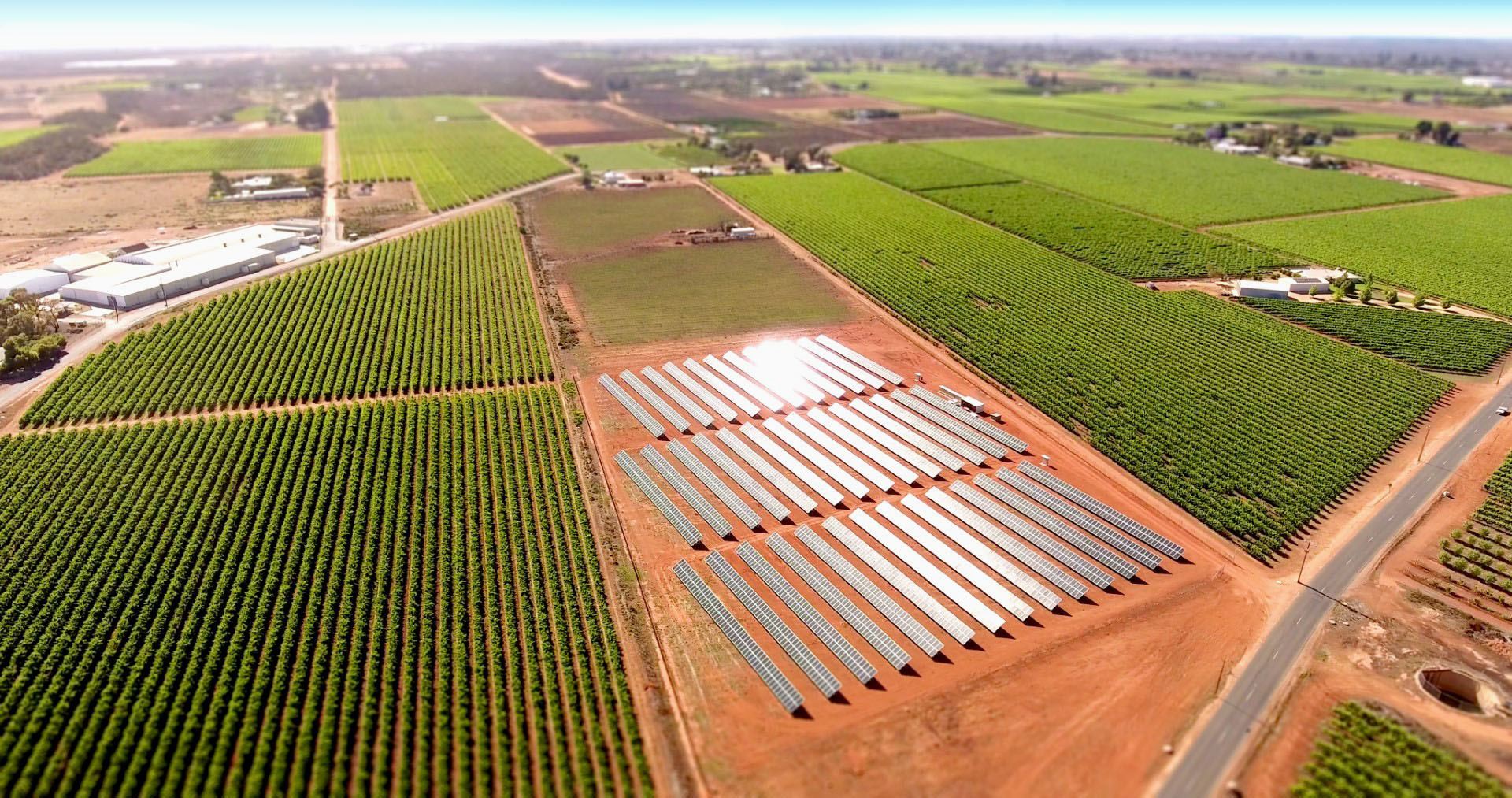In the Riverland region of South Australia, solar farms can be seen nestled amongst fields of crops, trees and grapevines. Landowners are integrating renewable energy into their existing farming practices, reactivating unused land parcels with solar farms. Many of these solar farms are part of the Redmud Green Energy project, which produces over 40 gigawatt hours (GWh) of electricity each year and reduces emissions by nearly 20,000 tonnes of carbon annually.
The Redmud Green Energy project, launched by Yates Electrical Services (YES Group) in 2016, pairs landowners with investors interested in renewable energy. Managing Director and Riverland local Mark Yates says this model has unlocked many investment opportunities in the National Electricity Market (NEM) and renewable energy space.
“We partner landowners with investors for the purpose of constructing sub-utility solar farms. The landowner receives annual payments for the use of their land, and the investor receives returns from the solar farm generation,” Mr Yates said.
"When our first few farms were commissioned, community acceptance amongst landowners and investor groups grew very quickly. People invest in things they believe have long-term value, and all our farm owners believe there will always be a long-term value to clean energy.”
Under the Large-scale Renewable Energy Target (LRET) scheme, the Redmud Green Energy project has flourished. Solar farms with capacity above 100kW generate large-scale generation certificates (LGCs), created based on the output of energy from the solar farm: one megawatt-hour (MWh) of generation is equal to one LGC. A standard 200 kW Redmud Green Energy installation will typically create approximately 375 LGCs each year and can make up 40% of the total revenue a solar farm creates.
Aside from benefits to the individual business owner, the program offers economic advantages to the local community. With a population of over 41,000 residents, Riverland's predominantly agricultural industry provides a quarter of Australia's annual grape crush - and uses a large amount of energy to do so. Money that would have been otherwise spent on energy bills can now be retained within the local economy with on-site renewable energy resources, creating jobs and introducing a new market to regional areas.
“Our team are proud of the many investment opportunities that we've helped unlock in the National Electricity Market,” Mr Yates said.
“We can also see a wider market out there still largely untapped, individuals and organisations who want to play a part in the transition to a net-zero grid and who are attracted to owning a low-maintenance asset.”
The Redmud Green Energy project is an innovative way to reactivate unused land with renewable energy assets and will play a significant role in Australia's transition to net zero.
